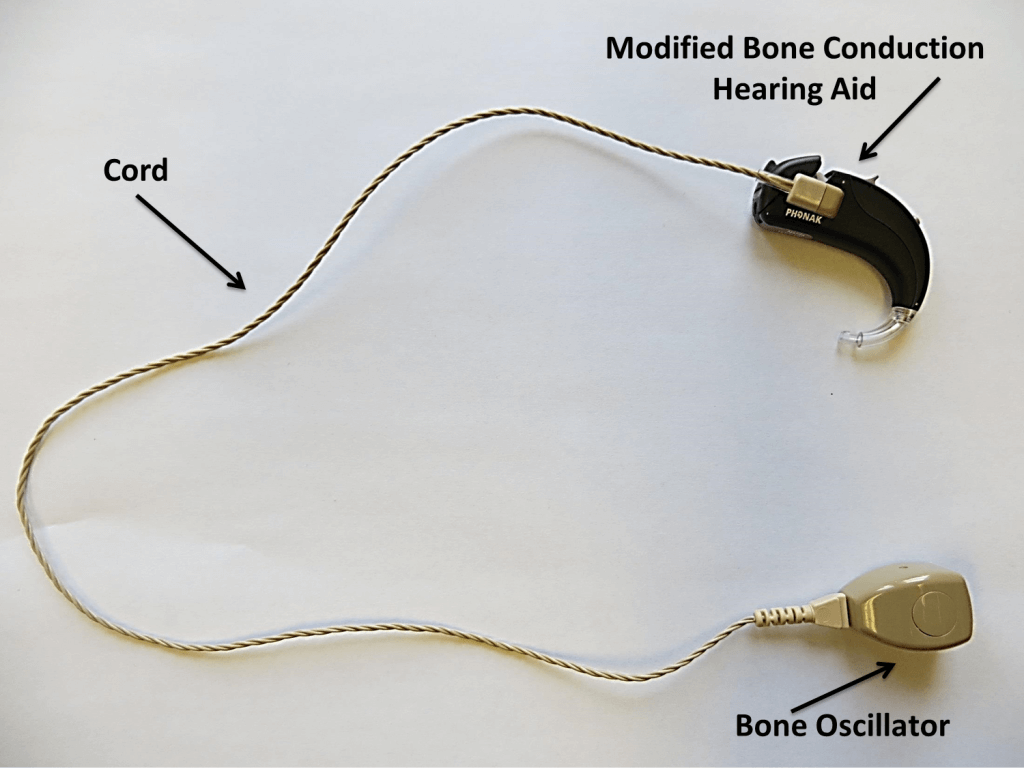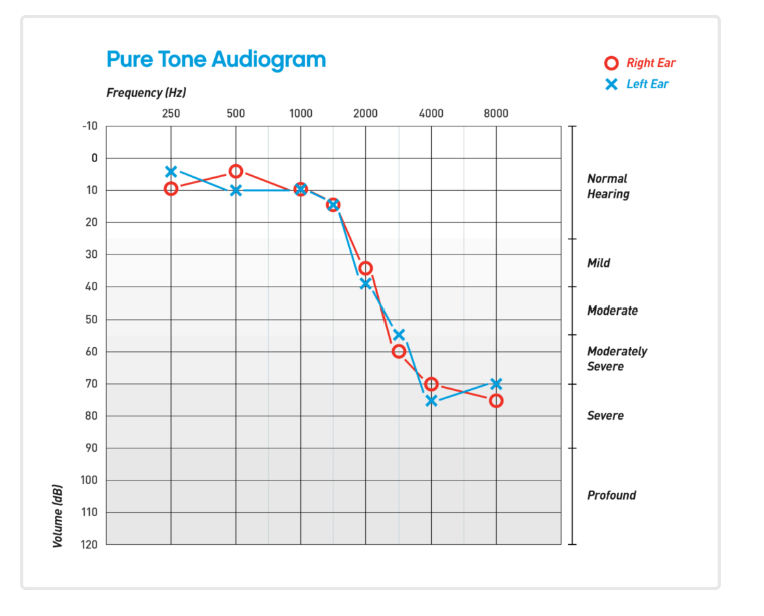When you experience hearing difficulties an accurate diagnosis is the first step to effective treatment. There are several hearing tests and each has its own uses for assessing the type and severity of hearing loss. In this post we’ll look at bone conduction testing – what it is, how it works and when it should be used.
What Is a Bone Conduction Test?
A bone conduction test measures how well the bones of your skull transmit sounds to the cochlea, a spiral shaped, fluid filled organ in the inner ear. The test involves placing a bone oscillator on the mastoid bone behind your ear.

Unlike air conduction tests which measure how sound travels through the air and into the ear canal, bone conduction bypasses the outer and middle ear to directly stimulate the inner ear.
Performing bone conduction testing is useful in identifying the type of hearing loss – whether it’s conductive, sensorineural or mixed.
- Conductive Hearing Loss: This happens when sound waves are partially blocked from passing freely through the outer or middle ear. Typical causes include ear infections, excessive earwax, fluid in the ear, or structural damage. Bone conduction tests help identify the exact cause of hearing loss by comparing results with air conduction tests.
- Sensorineural Hearing Loss: This type of hearing loss happens when the inner ear or auditory nerve is damaged. Causes can range from ageing (presbycusis) to exposure to excessive noise or genetics. The bone conduction test helps isolate the source of the problem – the inner ear or the auditory nerve.
- Mixed Hearing Loss: When someone has conductive and sensorineural hearing loss, bone conduction testing can help pinpoint the severity and nature of each component, guiding the most appropriate treatment.
How Bone Conduction Works
Normally sound waves enter through the outer ear and travel down the ear canal, causing the eardrum to vibrate. The vibrations pass through the small bones of the middle ear to the inner ear where they are converted into electrical signals that the brain recognises as sound.
With bone conduction the process is different. Sound vibrations are transmitted directly through the bones of the skull to the inner ear. They reach the cochlea which then converts them into electrical signals for the brain to process as sound.Bone conduction is a part of how we hear in everyday life. For example when you speak vibrations from your vocal cords are transmitted through your skull to your inner ears. This is why your voice sounds different on a recording as you’re hearing it through air conduction.
Bone conduction bypasses the outer and middle ear so people with conductive hearing loss can still hear sounds through the vibrations that travel directly through the skull.
Bone Conduction vs Air Conduction Tests
Although bone conduction and air conduction tests are both used to assess hearing, they work differently.
Air conduction testing evaluates the entire hearing pathway from the outer ear to the inner ear. Sounds are delivered through headphones and your ability to hear a range of frequencies and volumes is measured.
Bone conduction testing focuses on the inner ear’s function by delivering vibrations through a bone oscillator placed on the mastoid bone behind the ear. This allows audiologists to determine if the hearing loss is in the outer or middle ear or the inner ear.
By comparing the results of air and bone conduction tests audiologists can pinpoint the location and type of hearing loss.
When to Use Bone Conduction or Air Conduction
Air and bone conduction tests are part of a full hearing test. Here are some examples of when each test is useful:
- Air conduction testing is for general hearing assessments, to determine the degree of hearing loss and if further investigation is required.
- Bone conduction testing is useful in conductive hearing loss to distinguish it from sensorineural hearing loss.
- Both tests are often used together to get a full understanding of the patient’s hearing and guide treatment.
What Happens During Bone Conduction Testing?
- You will be seated in a sound booth to minimize external noise.
- The audiologist will then place a bone oscillator on the mastoid bone behind your ear. It’s a small device, often attached to a headband, that vibrates to deliver sound directly to the inner ear.
- The bone oscillator will produce sounds at different frequencies and volumes and you will be asked to respond each time you hear a sound, by raising your hand, pressing a button or simply saying yes.
- The audiologist will then record these responses to create an audiogram, a visual representation of your hearing levels.

Interpreting Bone Conduction Test Results
The results are shown on an audiogram with hearing thresholds representing the quietest sound a person can hear at different frequencies.
The results are plotted for both ears with different symbols for air conduction thresholds and bone conduction thresholds.
By comparing air and bone conduction thresholds audiologists can distinguish between conductive and sensorineural hearing loss.
This is important as it helps determine the underlying cause of hearing loss and what treatment is required.
| Test Results | Potential Next Steps |
| Normal Hearing | No action needed |
| Conductive Hearing Loss | Medical referral (ENT), hearing aids, or bone conduction hearing device (BCHD) |
| Sensorineural Hearing Loss | Hearing aids, cochlear implants, or BCHD |
| Mixed Hearing Loss (Conductive & Sensorineural) | Medical referral (ENT), hearing aids, or BCHD |
Bone conduction testing is unique amongst hearing tests as it bypasses the outer ear and eardrum and directly stimulates the cochlea through skull vibrations. This allows assessment of inner ear function even if the outer or middle ear is damaged. This is why it’s an important technique for conductive hearing loss.
Book a home hearing test appointment with us. Sound Hearing provides independent audiology services throughout London.
